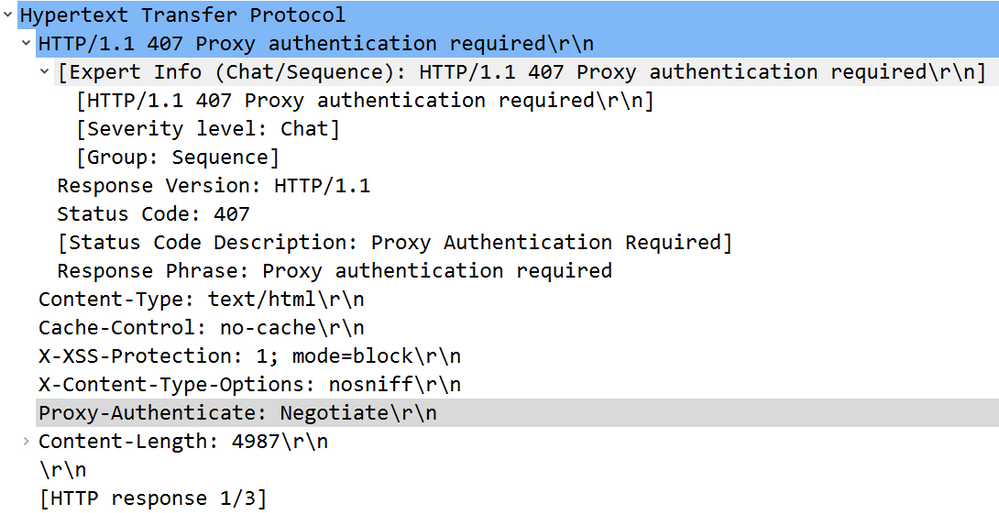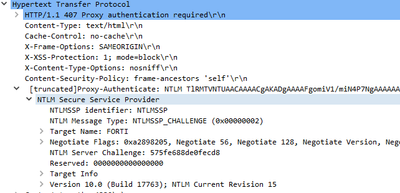- Support Forum
- Knowledge Base
- Customer Service
- Internal Article Nominations
- FortiGate
- FortiClient
- FortiADC
- FortiAIOps
- FortiAnalyzer
- FortiAP
- FortiAuthenticator
- FortiBridge
- FortiCache
- FortiCare Services
- FortiCarrier
- FortiCASB
- FortiConverter
- FortiCNP
- FortiDAST
- FortiData
- FortiDDoS
- FortiDB
- FortiDNS
- FortiDLP
- FortiDeceptor
- FortiDevice
- FortiDevSec
- FortiDirector
- FortiEdgeCloud
- FortiEDR
- FortiEndpoint
- FortiExtender
- FortiGate Cloud
- FortiGuard
- FortiGuest
- FortiHypervisor
- FortiInsight
- FortiIsolator
- FortiMail
- FortiManager
- FortiMonitor
- FortiNAC
- FortiNAC-F
- FortiNDR (on-premise)
- FortiNDRCloud
- FortiPAM
- FortiPhish
- FortiPortal
- FortiPresence
- FortiProxy
- FortiRecon
- FortiRecorder
- FortiSRA
- FortiSandbox
- FortiSASE
- FortiSASE Sovereign
- FortiScan
- FortiSIEM
- FortiSOAR
- FortiSwitch
- FortiTester
- FortiToken
- FortiVoice
- FortiWAN
- FortiWeb
- FortiAppSec Cloud
- Lacework
- Wireless Controller
- RMA Information and Announcements
- FortiCloud Products
- ZTNA
- 4D Documents
- Customer Service
- Community Groups
- Blogs
- Fortinet Community
- Support Forum
- Explicit proxy with Kerberos authentication
- Subscribe to RSS Feed
- Mark Topic as New
- Mark Topic as Read
- Float this Topic for Current User
- Bookmark
- Subscribe
- Mute
- Printer Friendly Page
- Mark as New
- Bookmark
- Subscribe
- Mute
- Subscribe to RSS Feed
- Permalink
- Report Inappropriate Content
Explicit proxy with Kerberos authentication
I followed the guide below to configure explicit proxy and enable Kerberos with NTLM in fallback:
Administration Guide | FortiGate / FortiOS 6.4.8 | Fortinet Documentation Library
Everything works correctly.
The problem is that all users authenticate through NTLM and not Kerberos:
# diagnose wad user list
ID: 2, IP: 10.1.100.202, VDOM: vdom1
user name : TEST31@DOMAIN
duration : 7
auth_type : Session
auth_method : NTLM
pol_id : 1
g_id : 5
user_based : 0
expire : no
LAN:
bytes_in=6156 bytes_out=16149
WAN:
bytes_in=7618 bytes_out=1917I have a doubt: is it all here or is some configuration missing?
I found this article on TechNet:
In particular it seems to be necessary to enable Kerberos for the service user used for the keytab:
<After the keytab generation, the User logon name changes into an SPN, so it can be found by Kerberos clients looking it up. Note that the checkbox "This account supports Kerberos AES 256 bit encryption" under Account Options is selected. The checkbox must be manually selected after the keytab generation otherwise you'll receive an error along the lines of 'Cannot find key of appropriate type to decrypt AP REP...".>
In our case, the Fortinet guide generates the keytab with the "-crypto all" option, so I have enabled all 3 fields DES, AES 128,AES 256.
But I keep seeing authentications only in NTLM...
Anyone have ideas?
Solved! Go to Solution.
- Labels:
-
FortiGate
- Mark as New
- Bookmark
- Subscribe
- Mute
- Subscribe to RSS Feed
- Permalink
- Report Inappropriate Content
I confirm that the DNS record created with the domain account name used to create the keytab must be used in the PAC file.
- Mark as New
- Bookmark
- Subscribe
- Mute
- Subscribe to RSS Feed
- Permalink
- Report Inappropriate Content
I'd recommend getting a packet capture on the client and enable Kerberos error logging. Double check the relevant browser auth settings (firefox splits ntlm and spnego/kerberos settings) and/or GPO. Also ensure your client has visibility to the KDC, and the SPN was registered correctly in AD when doing the ktpass step (from a windows joined machine: "setspn -l FGT" should return your personalized version of the example from the guide: "HTTP/FGT.FORTINETQA.LOCAL").
- Mark as New
- Bookmark
- Subscribe
- Mute
- Subscribe to RSS Feed
- Permalink
- Report Inappropriate Content
Hey ac1,
perhaps a stupid question, but what is the explicit proxy setting on your test client?
Does it have an IP or a hostname set?
For Kerberos authentication to work, the host needs to access proxy by hostname.
I once had the issue in a lab, all config was in place correctly but only NTLM auth was happening, and it turned out to be the case because of that simple oversight :D
- Mark as New
- Bookmark
- Subscribe
- Mute
- Subscribe to RSS Feed
- Permalink
- Report Inappropriate Content
An fqdn is set which is resolved correctly and from where the client I checked is able to obtain the PAC file.
Did you have to enable Kerberos support in the service domain account used on FortiGate, in your configurations?
Thanks
Created on 03-01-2022 12:15 AM Edited on 03-01-2022 12:16 AM
- Mark as New
- Bookmark
- Subscribe
- Mute
- Subscribe to RSS Feed
- Permalink
- Report Inappropriate Content
Hey ac1 - when I had my lab set up, I didn't have to enable anything specifically on the service account FortiGate was using as I recall.
You could consider taking a packet capture to see the proxy authentication process.
- you should see an HTTP 407 from FortiGate indicating that proxy authentication is required
- this should include an offer of what authentication methods are available
-> It should be visible here if FortiGate is only offering NTLM, or also offering Kerberos
-> that should give us some clue if Kerberos is even an option for the client PC, and if yes, which one it goes with.
EDIT:
We are, however, drifting into very technical troubleshooting - might be worth opening a ticket with Technical Support for more in-depth support.
- Mark as New
- Bookmark
- Subscribe
- Mute
- Subscribe to RSS Feed
- Permalink
- Report Inappropriate Content
I caught the traffic from the client. I filtered the traffic from "http.response.code == 407" and I saw:
what does it mean?
Created on 03-01-2022 07:43 AM Edited on 03-01-2022 07:43 AM
- Mark as New
- Bookmark
- Subscribe
- Mute
- Subscribe to RSS Feed
- Permalink
- Report Inappropriate Content
Hey ac1,
the ''Negotiate TlRMTVNTxxxxxxxx" bit is the one that indicates Keberos is being offered, if I remember correctly.
A pure NTLM offer looks like this:
- Mark as New
- Bookmark
- Subscribe
- Mute
- Subscribe to RSS Feed
- Permalink
- Report Inappropriate Content
Ok, so it is the client not accepting Kerberos Negotiation.
- Mark as New
- Bookmark
- Subscribe
- Mute
- Subscribe to RSS Feed
- Permalink
- Report Inappropriate Content
That's what it looks like to me at least.
- Mark as New
- Bookmark
- Subscribe
- Mute
- Subscribe to RSS Feed
- Permalink
- Report Inappropriate Content
The problem may be in the PAC file. The set FQDN does not have the same name as the service user for which the A record was created on the domain.
In this line:
return "PROXY proxy.domain.net:8080";
In my keytab:
config user krb-keytab
edit "http-proxy"
set pac-data disable
set principal "HTTP/fortinet.domain.net@DOMAIN.NET"
set ldap-server "domain.net"
set keytab "ENC xxxxxxxxxxxxxxxxxxxxxxxxxxxxxxx"
next
end
I have to test the FQDN change on the PAC file:
proxy.domain.net -> fortinet.domain.net
-
FortiGate
11,008 -
FortiClient
2,255 -
FortiManager
927 -
FortiAnalyzer
703 -
5.2
687 -
5.4
638 -
FortiSwitch
608 -
FortiClient EMS
604 -
FortiAP
577 -
IPsec
473 -
6.0
416 -
SSL-VPN
405 -
FortiMail
387 -
5.6
362 -
FortiNAC
315 -
fortiweb
267 -
6.2
251 -
FortiAuthenticator v5.5
234 -
SD-WAN
215 -
FortiAuthenticator
195 -
FortiGuard
164 -
FortiGate-VM
156 -
5.0
152 -
Firewall policy
152 -
6.4
128 -
FortiCloud Products
122 -
FortiSIEM
116 -
FortiToken
115 -
FortiGateCloud
113 -
Wireless Controller
97 -
High Availability
95 -
Customer Service
91 -
SAML
84 -
Routing
84 -
ZTNA
82 -
FortiProxy
81 -
Authentication
76 -
VLAN
76 -
BGP
75 -
DNS
74 -
Certificate
74 -
Fortivoice
73 -
FortiEDR
73 -
FortiADC
71 -
RADIUS
68 -
LDAP
66 -
FortiLink
62 -
SSO
61 -
NAT
58 -
FortiSandbox
57 -
Interface
54 -
FortiExtender
53 -
Application control
52 -
VDOM
50 -
4.0MR3
49 -
Virtual IP
48 -
Logging
44 -
FortiDNS
43 -
SSL SSH inspection
42 -
FortiPAM
41 -
Web profile
39 -
FortiGate v5.4
38 -
FortiSwitch v6.4
38 -
FortiConnect
36 -
Automation
36 -
FortiWAN
32 -
FortiConverter
31 -
API
30 -
Traffic shaping
29 -
FortiGate v5.2
28 -
FortiGate Cloud
27 -
Static route
27 -
SNMP
26 -
SSID
26 -
System settings
24 -
FortiSwitch v6.2
23 -
FortiPortal
23 -
OSPF
23 -
WAN optimization
22 -
Web application firewall profile
22 -
FortiMonitor
21 -
Web rating
20 -
IP address management - IPAM
20 -
FortiSOAR
19 -
Security profile
19 -
FortiAP profile
18 -
FortiGate v5.0
16 -
FortiDDoS
16 -
Explicit proxy
16 -
Admin
16 -
IPS signature
15 -
Traffic shaping policy
15 -
Proxy policy
15 -
Intrusion prevention
15 -
FortiManager v4.0
14 -
FortiCASB
14 -
NAC policy
14 -
Users
14 -
FortiManager v5.0
13 -
DNS filter
13 -
FortiDeceptor
12 -
Fabric connector
12 -
Port policy
12 -
FortiWeb v5.0
11 -
FortiBridge
11 -
FortiRecorder
11 -
trunk
11 -
Traffic shaping profile
11 -
Authentication rule and scheme
11 -
FortiAnalyzer v5.0
10 -
Fortinet Engage Partner Program
10 -
FortiGate v4.0 MR3
9 -
RMA Information and Announcements
9 -
Antivirus profile
9 -
Application signature
9 -
FortiCache
8 -
FortiToken Cloud
8 -
Packet capture
8 -
Vulnerability Management
8 -
4.0
7 -
4.0MR2
7 -
VoIP profile
7 -
FortiScan
6 -
FortiNDR
6 -
DoS policy
6 -
FortiCarrier
5 -
FortiTester
5 -
DLP profile
5 -
DLP sensor
5 -
Email filter profile
5 -
Protocol option
5 -
TACACS
5 -
Service
5 -
Cloud Management Security
5 -
3.6
4 -
FortiDirector
4 -
Internet service database
4 -
DLP Dictionary
4 -
Netflow
4 -
Replacement messages
4 -
SDN connector
4 -
Multicast routing
4 -
FortiDB
3 -
FortiHypervisor
3 -
FortiAI
3 -
Kerberos
3 -
Video Filter
3 -
File filter
3 -
Multicast policy
3 -
FortiEdge Cloud
3 -
FortiInsight
2 -
Schedule
2 -
ICAP profile
2 -
Zone
2 -
Lacework
2 -
FortiGuest
2 -
4.0MR1
1 -
FortiManager-VM
1 -
FortiCWP
1 -
Subscription Renewal Policy
1 -
FortiSASE
1 -
Virtual wire pair
1 -
FortiPresence
1 -
FortiEdge
1 -
FortiAIOps
1
| User | Count |
|---|---|
| 2846 | |
| 1437 | |
| 812 | |
| 803 | |
| 455 |
The Fortinet Security Fabric brings together the concepts of convergence and consolidation to provide comprehensive cybersecurity protection for all users, devices, and applications and across all network edges.
Copyright 2025 Fortinet, Inc. All Rights Reserved.


